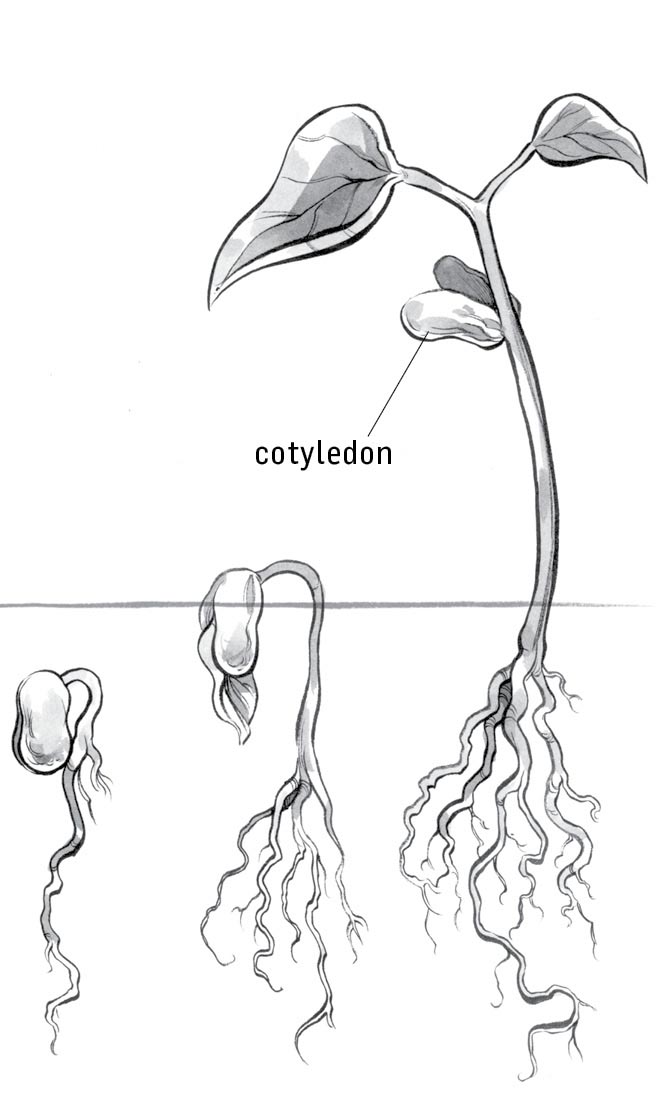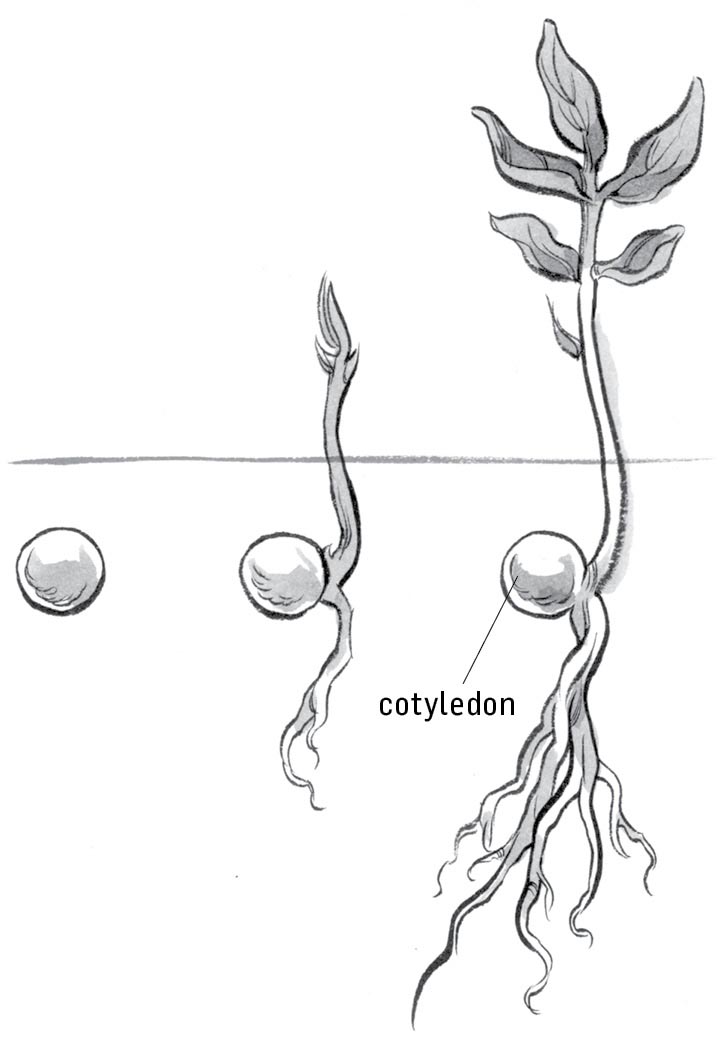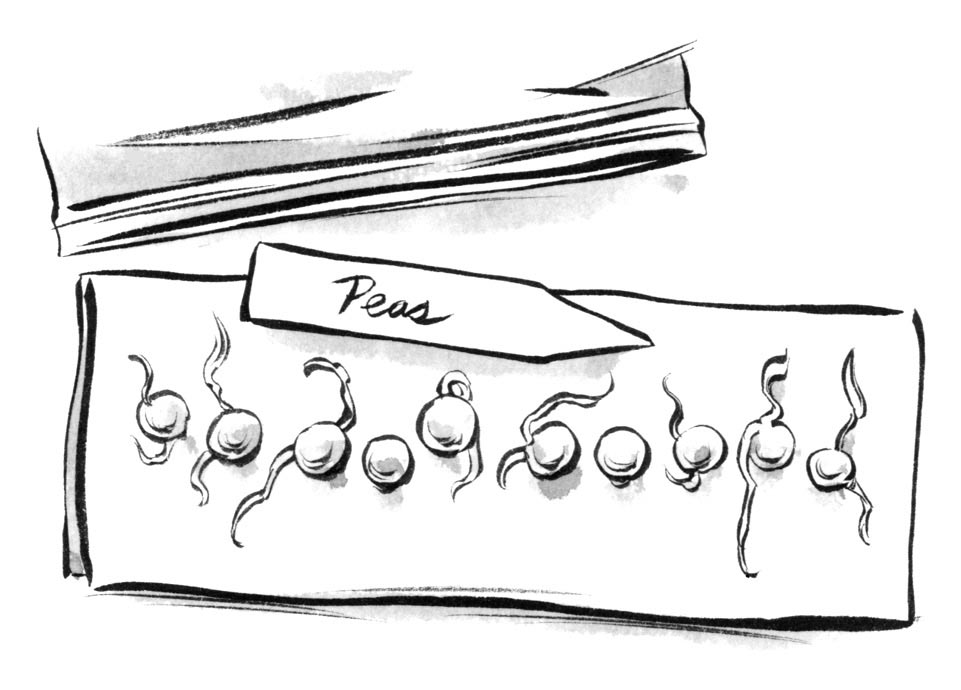Germination 101
Seeds are amazing structures, whether they are large, like beans or corn kernels, or tiny and dustlike, like the seeds of petunias or begonias. Each seed contains a tiny plant embryo complete with a root, shoot, and an initial set of leaves. Seeds also contain one or two cotyledons, also called seed leaves, which serve as food storage for the tiny plant. Some seeds, corn for example, also contain additional stored food, called endosperm.
A seed gets the signal to sprout when it is exposed to the proper temperature and enough water seeps from the soil through the seed wall. (The hardness or thickness of the seed coat affects how quickly water can seep in. See Special-Needs Seeds, page 58, for ways to cope with thick seed coats.) Seeds also need oxygen to germinate, which is why it’s important to plant in loose, well-drained soil or seed-starting mix that has space available for oxygen. The lack of sufficient soil oxygen is why seeds don’t germinate well in compacted soil.
Once the seed absorbs enough water, the embryo begins to grow. The radicle, or root, pushes down first. Then the stem elongates. In some seeds the cotyledons stay underground (hypogeal germination), while in others they are pushed aboveground (epigeal germination). The seedling depends on the food stored in cotyledons and endosperm to fuel the germination process. Once the tiny leaves (called true leaves) contained in the embryo are exposed to light and expand, the new plant can begin to make its own food.
Any Life Left?
Seed doesn’t stay alive, or viable, forever. Old seed or improperly stored seed may germinate at a lower percentage or not at all when compared to fresh seed. (See page 33 for details on proper storage.) It’s a good idea to test the germination of seed stored from a previous growing season. That way, you can buy a new supply if the seed doesn’t germinate at all, or simply sow more thickly if the percentage of germination is low.
Germination testing is best for annual flowers and vegetables that sprout quickly. Because perennials and woody plants sprout much slower and often have dormancy requirements that prevent quick germination, it’s often easier to sow such seeds and just see what comes up.
To test seeds of annual flowers and vegetables, you will need paper towels, zipper-type plastic bags, and, of course, the seeds to test. For best results, use strong paper towels, so they do not rip as they are folded and unfolded during the test.
- 1.Spread out 10 seeds, about 1 inch apart, on a damp paper towel. If there are signs of rot in the first couple of days, use a new batch of seeds and dip them in a weak bleach solution (1 part bleach to 10 parts water), then rinse them with clear water before repeating the test. This prevents fungi, which cause rot. Then spread them out on a damp paper towel. Make sure the towel is damp, but not dripping wet.
- 2.Fold or roll up the towel.
- 3.Write the name of the plant and the date on a piece of paper or a label.
- 4.Place the paper towel and the label in a plastic bag, close partway, and set it in a warm (65° to 70°F) place.
- 5.Starting in 1 week, or after the normal number of days to germination (see the seed packet for this information), unroll the towel daily or every other day to check for sprouted seedlings. Remove any seeds that show signs of rot to keep them from infecting the rest of the seeds.
If more than 7 of the seeds sprout, sow at the normal rate recommended on the packet. If less than 7 have sprouted, sow more densely to allow for the lower rate. If no seeds germinate within a week or so of the normal germination time, replace the seeds.


